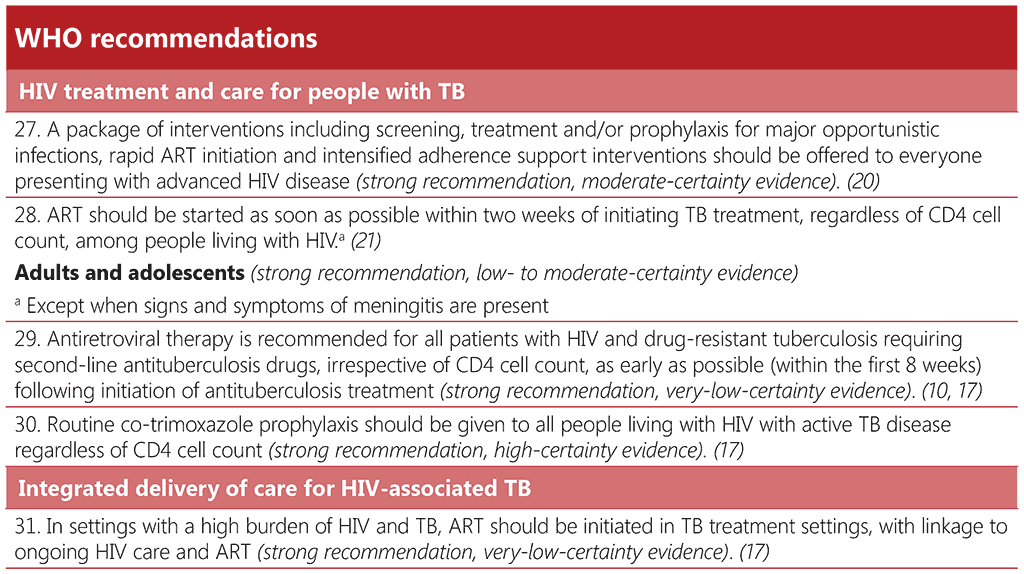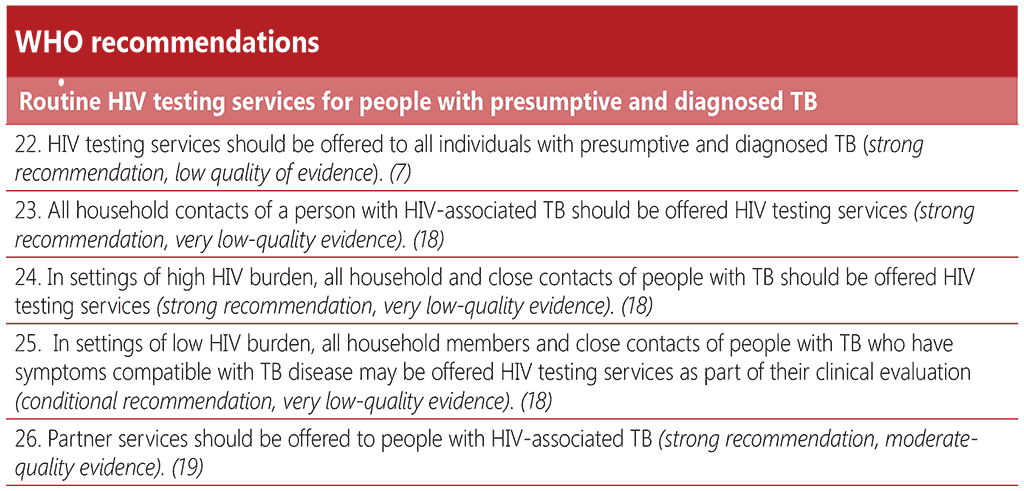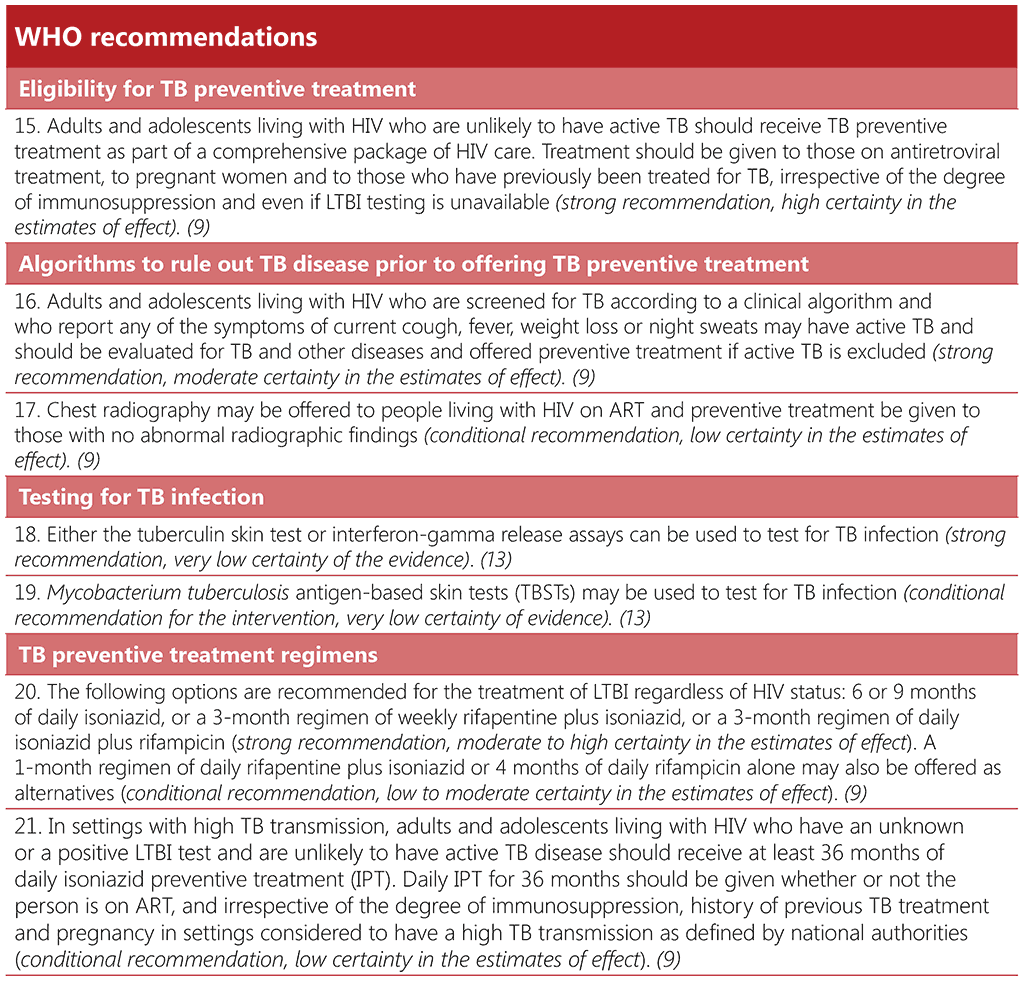Annex 4. Package of care for advanced HIV disease
Table A4.1 summarizes the specific components of the package of interventions that should be offered to people presenting with advancsed HIV disease. For detailed guidance on the package of interventions for advanced HIV disease, including for children, see Guidelines for managing advanced HIV disease and rapid initiation of antiretroviral therapy (1) and WHO consolidated guidelines on tuberculosis: Module 5. management of tuberculosis in children and adolescents (2).
Table A4.1. Components of the package of care for people with advanced HIV disease
 Feedback
Feedback


